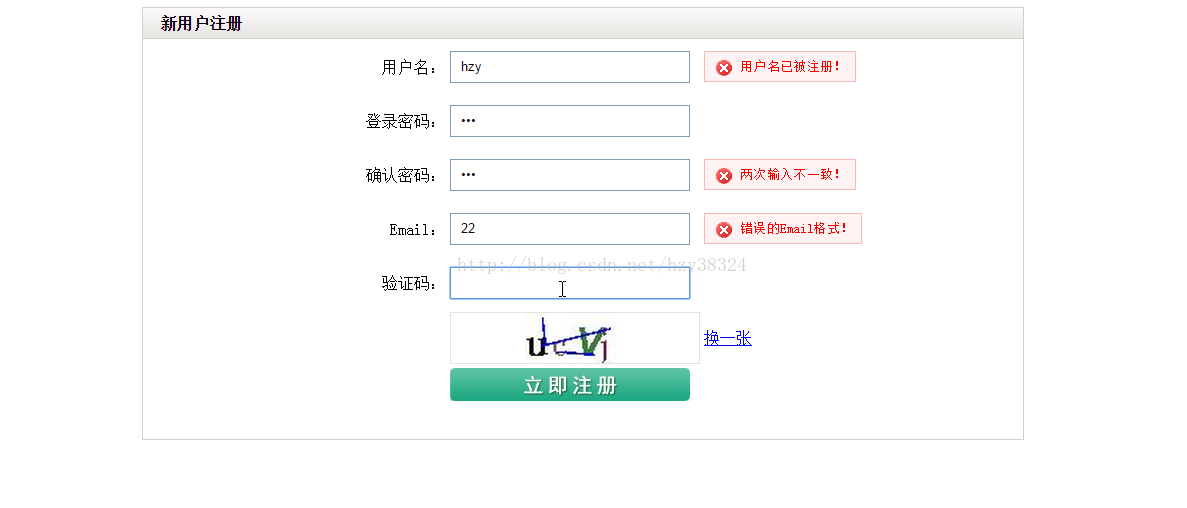本文实例讲述了CI框架(CodeIgniter)公共模型类定义与用法。分享给大家供大家参考,具体如下:
我们都知道,操作数据库的方法都写在模型中。但是一般情况下,一张表往往至少对应4个操作,也就是所谓crud。那么如果20张表,所对应的模型方法,就达到了80个,重复的操作显然这已经是一个体力活儿。
那么就对单表操作时,我们进行一下简单的封装。如下是ci框架的示例:
?
|
1
2
3
4
5
6
7
8
9
10
11
12
13
14
15
16
17
18
19
20
21
22
23
24
25
26
27
28
29
30
31
32
33
34
35
36
37
38
39
40
41
42
43
44
45
46
47
48
49
50
51
52
53
54
55
56
57
58
59
60
61
62
63
64
65
66
67
68
69
70
71
72
73
74
75
76
77
78
79
80
81
82
83
84
85
86
87
88
89
90
91
92
93
94
95
96
97
98
99
100
101
102
103
104
105
106
107
108
109
110
111
112
113
114
115
116
117
118
119
120
121
122
123
124
125
126
127
128
129
130
131
132
133
134
135
136
137
138
139
140
141
142
143
144
145
146
147
148
149
150
151
152
153
154
155
156
157
158
159
160
161
162
163
164
165
166
167
168
169
170
171
172
173
174
175
176
177
178
179
180
181
182
183
184
185
186
187
188
189
190
191
192
193
194
195
196
197
198
199
|
<?php
/**
* Created by PhpStorm.
* User: kangjianrong
* Date: 16-8-26
* Time: 上午10:29
*/
class My_model extends CI_Model {
//数据库
public $errors = array();
const dataBase = 'qndnew';
public function __construct()
{
// Call the CI_Model constructor
parent::__construct();
}
/**
* 查询分页数据(使用于简单的单表操作)
* @param string $model 模型 例如:User_model
* @param string $table 表名
* @param string $select_fields 要显示字段
* @param array $param 查询条件:
* compare(比较):
* array($key => $val) $key为要操作的字段,$val为要操作的值
* array('name !=' => $name, 'id <' => $id, 'date >' => $date);
* like(模糊查询)
* array('title' => $match, 'page1' => $match, 'page2' => $match)
* customStr(自定义字符串):
* "name='Joe' AND status='boss' OR status='active'"
* in:
* array('userName' => array('Frank', 'Todd', 'James'))
* @param string $page 当前页数(查询全部数据时,设置为空)
* @param string $limit 查询条数(查询全部数据时,设置为空)
* @param array $order 排序条件:
* array($key => $val)
* $key为排序依据的字段,
* $val为排序的方式【asc (升序,默认)或 desc(降序), 或 random(随机)】
* @$isReturnCount boole 是否返回总条数
* @return array|boolean
*
*/
public function pageData($model, $table, $param = array(),$select_fields = '', $page = '1', $limit = '15', $order = array(),$isReturnCount = true){
if(empty($model) || empty($table)){
return false;
}
$this -> load -> model($model);
$table = $this->db->dbprefix.$table;
//处理查询字段
if(!empty($select_fields)){
$this->db->select($select_fields)->from($table);
}elseif(isset($this -> $model -> selectFields)){
$this->db->select($this -> $model -> selectFields)->from($table);
}else{
$this->db->select('*')->from($table);
}
//处理查询条件
if (is_array($param) && count($param) > 0){
$this -> parseParam($param);
}
//统计总数
if($isReturnCount){
$rs['count'] = $this->db->count_all_results('',false);//不重置查询构造器
array_push($this -> errors,$this->db->last_query());
}
//分页数据处理
if(isset($page) && isset($param['limit'])){
//分页边界值 设置
$offset = $param['page'] <= 1 ? 0 : ($param['page']-1) * $param['limit'];
$this->db->limit($param['limit'], $offset);
}
//排序规则的组合
if (!empty($order) && is_array($order))
{
foreach ($order as $key => $val)
{
$this->db->order_by($key, $val);
}
}else{
//默认按照此表的主键倒序
$primary = $this->getPrimary();
if(!empty($primary))
{
$this->db->order_by($primary, 'DESC');
}
}
$query = $this->db->get();
array_push($this -> errors,$this->db->last_query());
$rs['list'] = $query->result_array();
return $rs;
}
/**
* 解析参数
*/
private function parseParam($param){
if(isset($param['compare'])){
foreach ($param['compare'] as $key => $val){
if (!empty($val)) $this->db->where($key, $val);
}
}
if(isset($param['like'])){
foreach ($param['like'] as $key => $val){
if (!empty($val)) $this->db->like($key, $val);
}
}
if(isset($param['in'])){
foreach ($param['in'] as $key => $val){
if (!empty($val)) $this->db->where_in($key, $val);
}
}
if(isset($param['customStr'])){
if (!empty($val)) $this->db->where($param['customStr']);
}
}
/**
* 新增信息
* @param string $table 表名称
* @param array $param 数据变量
* @return INT ID
*/
public function add($table = '', $param = array())
{
if(empty($table) || !is_array($param) || empty ($param)){
return FALSE;
}
//写入数据表
$this->db->insert($table, $param);
array_push($this -> errors,$this->db->last_query());
//返回记录ID
return $this->db->insert_id();
}
/**
* 更新分类信息
* @param string $table 表名称
* @param string $primary 表主键
* @param int $id 分类ID
* @param array $param 更新的数据
* @return type
*/
public function update($table = '', $primary = '', $id = 0, $param = array())
{
if(empty($table) || empty($primary) || empty($param) || empty($id))
{
return FALSE;
}
$id = (int)$id;
$this->db->where($primary, $id)
->limit(1)
->update($table, $param);
array_push($this -> errors,$this->db->last_query());
return $this->db->affected_rows();
}
/**
* 删除指定ID记录
* @param string $table 表名称
* @param string $primary 表主键
* @param array $id 分类ID
* @return int
*/
public function delete($table = '', $primary = '', $id = array()){
if(empty($table) || empty($primary) || empty($id)){
return FALSE;
}
$this->db->where_in($primary, $id)
->delete($table);
array_push($this -> errors,$this->db->last_query());
return $this->db->affected_rows();
}
/**
* 获取表的主键
* @param string $database 数据库名称
* @param strting $table 表名称
*/
public function getPrimary($table = '', $database = self::dataBase)
{
if(empty($database) || empty($table))
{
return FALSE;
}
$sql = "SELECT k.column_name
FROM information_schema.table_constraints t
JOIN information_schema.key_column_usage k
USING (constraint_name,table_schema,table_name)
WHERE t.constraint_type='PRIMARY KEY'
AND t.table_schema='qndnew'
AND t.table_name='qnd_user'";
$query = $this->db->query($sql)->result_array();
return isset($query[0]['column_name']) ? $query[0]['column_name'] : false;
}
/**
* debug sql语句
*/
public function debugSql(){
if(count($this->errors) > 0){
foreach($this->errors as $val){
echo $val.'<br>';
}
}
}
}
|
具体的业务逻辑模型如下:
?
|
1
2
3
4
5
6
7
8
9
10
11
12
13
14
15
16
17
|
class User_model extends My_model {
const USER = 'qnd_user';
public $selectFields = array(
'id',
'guid',
'phone',
'userName',
'password',
'headPortraits',
'nickName',
'createTime',
);
const SMS_ROLE = 'qnd_role';
public function __construct()
{
}
}
|
控制器中测试如下:
?
|
1
2
3
4
5
6
7
8
9
10
11
|
public function modelTest(){
$this -> load -> model('User_model'); // 載入 model
$whereArr = array(
'compare'=>array(
'userName' => 'Frank',
),
);
$rs = $this -> User_model -> pageData('User_model','user',$whereArr);
print_r($rs);
$this -> User_model -> debugSql();
}
|
相关文章
猜你喜欢
- ASP.NET本地开发时常见的配置错误及解决方法? 2025-06-10
- ASP.NET自助建站系统的数据库备份与恢复操作指南 2025-06-10
- 个人网站服务器域名解析设置指南:从购买到绑定全流程 2025-06-10
- 个人网站搭建:如何挑选具有弹性扩展能力的服务器? 2025-06-10
- 个人服务器网站搭建:如何选择适合自己的建站程序或框架? 2025-06-10
TA的动态
- 2025-07-10 怎样使用阿里云的安全工具进行服务器漏洞扫描和修复?
- 2025-07-10 怎样使用命令行工具优化Linux云服务器的Ping性能?
- 2025-07-10 怎样使用Xshell连接华为云服务器,实现高效远程管理?
- 2025-07-10 怎样利用云服务器D盘搭建稳定、高效的网站托管环境?
- 2025-07-10 怎样使用阿里云的安全组功能来增强服务器防火墙的安全性?
快网idc优惠网
QQ交流群
您的支持,是我们最大的动力!
热门文章
-
2025-05-29 94
-
2025-05-27 92
-
从Windows 2012标准版升级到数据中心版,标准评价版本升级到标准体验版本并激活
2025-05-27 32 -
2025-06-04 62
-
2025-05-29 89
热门评论











